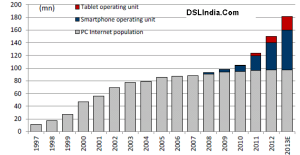 After testing for 6 years in Seattle, Amazon launched AmazonFresh in LA, which is the beginning of Amazon’s grocery expansion efforts to potentially all large metro areas in the coming years. The grocery category is a ~$600bn opportunity in the U.S., but Amazon’s strategy will likely target the top 20 metro areas (MSAs) by population, which we estimate is a $220bn opportunity.
After testing for 6 years in Seattle, Amazon launched AmazonFresh in LA, which is the beginning of Amazon’s grocery expansion efforts to potentially all large metro areas in the coming years. The grocery category is a ~$600bn opportunity in the U.S., but Amazon’s strategy will likely target the top 20 metro areas (MSAs) by population, which we estimate is a $220bn opportunity.
Some of the Attributes to AmazonFresh that may differentiate it from its competitors and diminish the negative impact of AmazonFresh include – charging fees ($7.99-$9.99 per deliver below $100), Amazon Prime Fresh program (high $299 upfront fee), opportunity to sell non-grocery products that have higher margins, third party marketplace and AmazonFresh may target a higher income customer.








